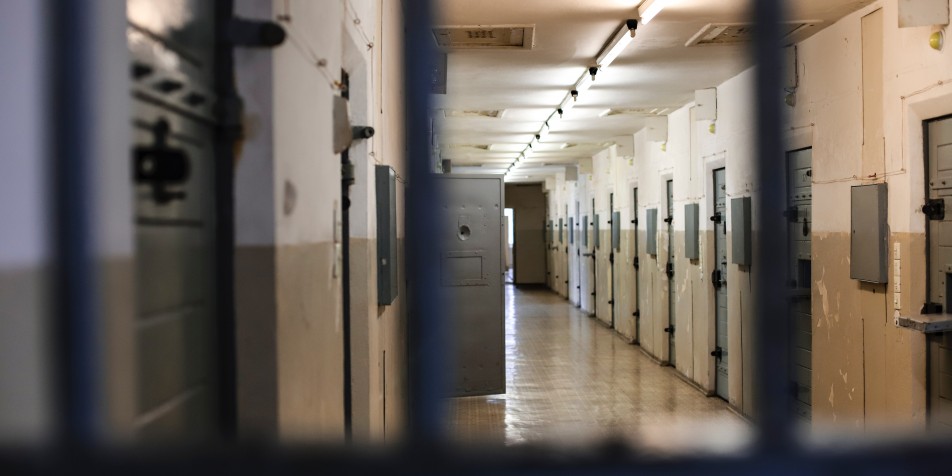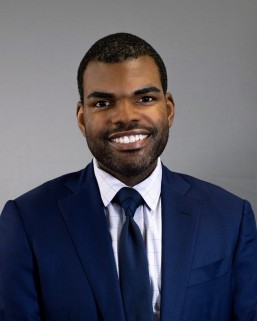Updates on the PA Juvenile Justice Task Force Meeting

The next meeting of the Pennsylvania Juvenile Justice Task Force is scheduled for Wednesday, September 30, 2020 from 3-5 p.m., and can be viewed on the Task Force website. The September 30, 2020 meeting will focus on data related to fines, fees, and restitution, as well as youth who are charged as adults. Look for a future blog summarizing what occurs.
As mentioned in our previous blogs, the Task Force has added an extra hour to all meetings to allow time for public testimony. The link to sign up to testify is still available on the Task Force website. Currently, testimony is limited to five minutes per person, and there is a limit on the number of individuals that can testify per meeting. Keep in mind that Task Force member attendance during the extra hour of public testimony is voluntary. Juvenile Law Center encourages all Task Force Members to stay in the meeting to hear this valuable testimony.
Data Analysis
As you will recall, Pew Charitable Trusts (Pew) has been presenting on data related to the different stages in the juvenile justice system. The August 26, 2020 and the September 9, 2020 meetings focused on data related to placement in juvenile facilities. (For a summary of the data presented on probation, please see our previous blog discussing the August 12, 2020 meeting.)
The major findings from the data are: (1) Pennsylvania prioritizes funding out-of-home placements rather than in-home services, (2) racial disparities exist both in the rates at which youth are placed, and the length of those placements. That Pennsylvania prioritizes out-of-home placements is particularly troubling because of the stark racial disparities in the rates at which youth are placed and the length of those placements. Youth are uprooted from their communities and support-systems and sent to out-of-home placements based primarily on their race. Additionally, out-of-home placements are more expensive than in-home-services, making the case that Pennsylvania should decrease the use of out-of-home placements in favor of in-home services. The cost savings from this shift could then be reallocated to community based programs that are proven to help youth.
Pew obtained some of the data discussed in this meeting through questionnaires sent to 61 juvenile court judges (42% response rate) and 684 juvenile probation officers (JPOs) (56% response rate), encompassing all counties in the state. While this blog only highlights a few key pieces of data, the PowerPoint slides containing all the data discussed during the meeting are available on the Task Force website.
Disposition Options
As background, once a juvenile court judge adjudicates a youth delinquent, the court holds a disposition hearing to determine the appropriate disposition (akin to sentencing). Disposition options include ordering probation, ordering placement, and imposing fines, fees, costs, and restitution. A judge must provide the reasons for the chosen disposition along with the goals, terms, and conditions of that disposition. If a judge sends a youth to an out-of-home placement, the judge must state why that placement is the least restrictive option and also why it is best suited for the
youth’s rehabilitation. Additionally, the placement and juvenile probation officer (JPO) must develop a treatment plan for the youth while at the placement.
Types of Placements
Placements fall into two main categories: private placements and state-run facilities (which are only for those age 12 or older). Private placements are more common and typically offer more services. Examples of private placements include group homes, residential treatment facilities, inpatient mental health service facilities, and secure residential facilities (which are more similar to a youth prison). Pennsylvania has five state-run facilities, which are either youth development centers (YDCs) or youth forestry camps (YFCs). Counties can use any number of private placements and state-run facilities at varying costs depending on the facility. As will be explained below, the Pennsylvania Department of Human Services (DHS) reimburses counties for a percentage of the placement cost.
An important distinction is that private placements can reject any youth sent to the facility, but state-run placements must accept all youth. Once a private placement has accepted a youth, that placement can also reject the youth for “failure to adjust.”
Criteria for Placement Determinations
Courts consider different factors when making placement determinations, and those factors vary depending on the county. The most common factors are community protection, risk and needs assessment results, and probation officer recommendations. Most juvenile court judges (98%) reported making indeterminate placements (i.e. placements that were not limited to a certain length of time). There are few statutory limits on the length of placement, so youth can remain in placement until they age out of juvenile court jurisdiction.
Costs of Placement
Instead of prioritizing in-home or community-based services, Pennsylvania spends far more money sending youth to out-of-home placements. Overall, Pennsylvania’s juvenile delinquency expenditure has decreased by 11% since 2015. In 2019, Pennsylvania’s total juvenile delinquency expenditure was $349 million; 80% (approximately $281 million) of that was spent on private and state-run out-of-home placements. Only 20% (approximately $68 million) of that expenditure was spent on in-home services that would allow youth to remain in their communities.
Out-of-home placement costs vary according to the services the placement offers. In 2019, juvenile detention (intended to be a temporary holding while a youth awaits disposition of their case, though in some cases a youth may remain longer) was the most expensive service type, with an annual cost of $220,193 per youth. State-run facilities (YDCs/YFCs) had an annual cost of $193,720 per youth, and private secure residential facilities had an annual cost of $125,842 per youth. State-run placements had an annual cost of $192,720 per youth. These costs have not dramatically changed since 2015. In 2019, private placements had an annual cost of $107,468 per youth, which has increased by 54% since 2015.
Pennsylvania DHS reimburses counties for placements at different rates depending on the type of placement and the services offered at the placement. DHS reimburses 80% of costs for
community residential and group home services, supervised living services, and alternative treatment services. DHS reimburses 90% of costs for emergency shelter services, and 50% of juvenile detention services.
Placement Dispositions
From 2009-2018, placement dispositions decreased 54% from 6,547 to 3,026. In 2018, 85% of youth adjudicated delinquent were placed in private residential facilities, and 15% in state-run facilities. Among youth who were admitted to state-run facilities, 65% of youth were admitted to YDCs and 35% to YFCs. Among private facilities, the most common service types were general residential services, community residential/group home, and drug and alcohol programs.
In 2018, the most common offenses resulting in placement included misdemeanor simple assault, misdemeanor theft-related offenses, and felony robbery. Offenses resulting in placement were nearly identical for both private and state-run placements. Nearly 66% of placement dispositions were for non-felony offenses. Moreover, 66% of misdemeanor placements were for non-person offenses, and 50% of felony placements were for non-person offenses. These figures indicate that youth are usually sent to placement for less serious offenses.
In 2018, 73% of youth sent to placement had no prior delinquency adjudications. 54% of youth sent to placement scored moderate risk to re-offend on the Youth Level of Service (YLS) risk assessment tool; 31% scored high risk, and 14% scored low risk. Approximately 75% of youth sent to private residential facilities scored low or moderate risk.
Demographics in Placement Rates
Much like the other stages in the juvenile justice system, racial disparities pervade placement decisions. Black Non-Hispanic youth account for 38% of written allegations (documents containing the youth’s alleged unlawful conduct), but 47% of placement decisions. Black Non-Hispanic males account for 28% of written allegations, but 42% of placement decisions. Hispanic males account for 10% of written allegations, and 13% of placement dispositions. However, white males account for 34% of written allegations, but only 28% of placement dispositions. Because written allegations initiate juvenile court proceedings, the statewide percentage of written allegations should be similar to the percentage of placement decisions for any given population. The fact that placement percentages are higher than the written allegation percentages for Black Non-Hispanic and Hispanic youth, but not for white youth, highlights a real problem with our justice system.
At the county level, Philadelphia accounts for a significantly higher number of placements than its statewide percentage of written allegations would indicate. Philadelphia accounts for 10% of statewide written allegations, but 24% of statewide placement dispositions.
Length of Placement
Pew lastly discussed data regarding length of placement, which included results from case studies of youth sent to out-of-home placements. In one case study for a youth whose case closed in 2014, the youth was sent to placement four times, a detention center four times, and an emergency shelter once. That youth spent a total of 32 months in out-of-home care and spent a total of 53 months under juvenile court supervision. Another youth was sent to an emergency
shelter twice, and placement and detention once. That youth spent a total of 10 months in out-of-home care, and a total of 21 months under juvenile court supervision.
Youth receive multiple placements at facilities which all have different cultures and treatment options. In 2018, almost 50% of youth sent to placements went to five or more out-of-home placements. On average, youth went to 6 out-of-home placements. Approximately 50% of youth sent to placement went to more than one residential placement; 26% were sent to three or more. Youth sent to residential placements spent an average of 6.5 months at those placements. Youth sent to state-run facilities spent an average of 6.3 months, and youth sent to private facilities spent an average of 6.6 months. Youth with placement dispositions spent an average of 16 months outside the home. Additionally, placement facilities are usually located far from the youth’s family, friends, and support system, which furthers isolation.
Racial Demographics in Length of Placement
Race not only influences the rate at which youth are placed, it also influences the length of time youth spend at placements and under overall court supervision. Among youth sent to out-of-home placements in 2018, Black Non-Hispanic males spent the longest length of time in out-of-home placements. Black Non-Hispanic males spent an average of 18 months in placement, while White Non-Hispanic and Hispanic males spent an average of 15 months. Black Non-Hispanic and Hispanic females spent an average of 13 months in placement, while White Non-Hispanic females spent an average of 11 months.
Youth spent an average of 38 months under court supervision. Black Non-Hispanic males spent an average of 42 months under court supervision, Hispanic males spent an average of 37 months, while White Non-Hispanic males spent an average of 36 months. Black Non-Hispanic females spent an average of 36 months under court supervision and Hispanic females spent an average of 34 months, while White Non-Hispanic females spent an average of 29 months.
This data continues to highlight the common thread that racial disparities exist throughout every stage in the juvenile justice system process. Please stay tuned to our Twitter, Instagram, and Facebook, as we will be releasing infographics regarding the racial disparities and other flaws in the system.
